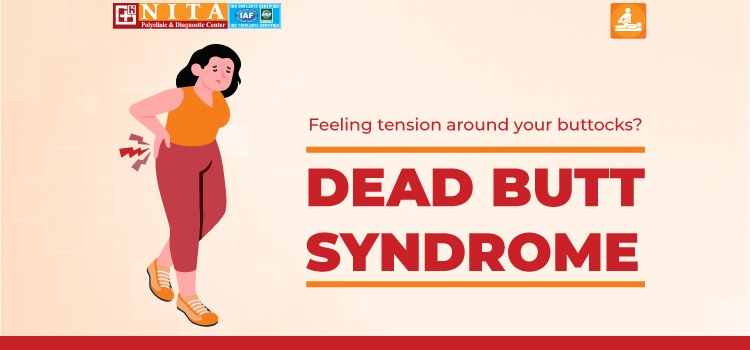Dead Butt Syndrome (DBS)
- 2023-11-03
DBS, also called lower cross syndrome, gluteal amnesia, or gluteus medius tendinosis, occurs when the gluteus medius (one of the three main muscles in the buttock) weakens due to sitting all day.
Did you know, sitting for long hours daily may put you at risk of experiencing Dead Butt Syndrome (DBS)?
It is a condition in which the muscles in
the buttock region (glutes) become weak or inactive due to prolonged sitting or
a lack of regular strengthening exercises. Prioritize your bone, muscle, and
joint to alleviate the discomfort.
Symptoms of Dead Butt Syndrome
Numbness and soreness in the butts are usually the commonest symptoms, but it can present with an array of concerns like:
Hip pain
Lower back pain
Stiff hip muscles
Balance difficulties
Reduced range of motion
Knee pain
Altered walking or running patterns
Tips to Prevent Dead Butt
Syndrome
KEEP MOVING EVERY HOUR
This helps deter Dead Butt Syndrome by
preventing prolonged sitting, which can lead to muscle atrophy (wasting away)
and weakness in the gluteal muscles. The activity does not have to be intense
or prolonged. A simple way is to replace continuous sitting with walking around
while on phone calls.
GET THE RIGHT EXERCISE
Practice targeted glute-strengthening
exercises, such as squats, and lunges, to reactivate and strengthen the
weakened muscles. These exercises are essential to alleviate pain, improve
posture, and prevent further issues associated with Dead Butt Syndrome.
WORK ON YOUR POSTURE
Proper posture reduces stress on the gluteal muscles and spine. The correct posture involves maintaining an upright spine with shoulders back, engaging the core (muscle of the stomach), and avoiding prolonged slouching or sitting with crossed legs.
We generally do not pay attention to our chairs while working, which can lead to improper posture and increase the risk of Dead Butt Syndrome. Here are a few tips for choosing the right chair while working-
Lumbar Support: should not be a gap between your spine and the back of the chair.
Height of the Chair: with adjustable height, the soles of your feet should be firmly planted on the ground with ample thigh support
Width of the Seat: entire rear should fit comfortably in the seat.
The Seating Surface: the seat does not sink more than 2 inches.
The Arm Rest: supports your elbows while the hands work.
STRETCH, NO MATTER WHAT
Stretching helps maintain flexibility in
the hip muscles, preventing muscle tightness and imbalances that contribute to
the condition. Prioritize stretching even if you are not working out. Stretch
the front of your body, which often becomes tense from prolonged sitting by
allocating at least 2 minutes (or 1 minute per leg) to prevent Dead Butt
Syndrome.
Feeling tension around your buttocks, Try the RICE (Rest, Ice, Compression, and Elevation) technique as one of your first treatments that helps reduce swelling, ease pain, and speed up healing.
Rest: Minimize physical activity as much as possible
Ice: Apply an ice pack or cold compress to alleviate discomfort and reduce inflammation.
Compression: Pain around the knee or back is a common symptom of Dead Butt Syndrome, follow specialist recommendations for wrapping them for relief
Elevation: Maintain proper leg support and elevation as instructed by your doctor.
In the battle against Dead Butt Syndrome,
remember, strong glutes make for happy seats!
For short-term and effective pain relief- A professional can help you understand the condition better.
Get an online appointment at Physiotherapy Clinic.
Medically Reviewed by
Dr. Shruti Mahato, Consultant Physiotherapist


























Leave Comment